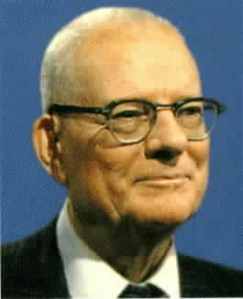Cracking the Quality Code: Deming and Crosby
Cracking the Quality Code: Deming and Crosby
W. Edwards Deming is a name synonymous with quality management and process improvement, particularly in Japan where he helped revive post-war industries. Deming’s approach centres around Statistical Process Control (SPC) and the “Plan-Do-Study-Act” (PDSA) cycle, which emphasises iterative improvement.
His core philosophy manifests through “The 14 Points of Management,” guidelines designed to steer management’s decisions and actions towards achieving quality. Here are a few key points to consider:
- Create Constancy of Purpose: Long-Term Over Short-Term Deming believed in focusing on long-term goals instead of short-term profits.
- Adopt the New Philosophy: Innovation Over Status Quo Deming urged the adoption of new approaches to improve quality and productivity.
- Cease Dependence on Inspection: Build Quality In, Don’t Inspect It In For Deming, quality should be built into the process, rather than inspected into the finished product.
- Stop Awarding Business Based on Price: Value Over Cost Deming advised prioritising value and quality when choosing suppliers, rather than just looking at price.
- Improve the System: Continual Improvement Over Quick Fixes Deming emphasised the need for continual improvement in products, services, and processes.
- Use Training for Skills: Education Over On-the-Job Training For Deming, well-planned training programs were preferable to quick, on-the-job training.
- Implement Leadership: Leadership Over Mere Supervision Deming believed in guiding workers to better performance through leadership, rather than simply supervising them.
- Drive Out Fear: Openness Over Secrecy Deming recommended creating a work environment where employees feel secure, leading to better quality work.
- Break Down Barriers: Teamwork Over Individual Performance According to Deming, departments within an organisation must work together as a team for better quality.
- Eliminate Slogans: Reality Over Rhetoric Deming criticised empty slogans that demand performance without providing methods. “By what method?”
- Eradicate Numerical Quotas: Quality Over Quantity Deming advised against numerical production quotas that sacrificed quality for volume.
- Remove Barriers to Pride of Workmanship: Satisfaction Over Speed Deming believed in allowing employees to take pride in their work, rather than rushing them through tasks.
- Institute Education and Retraining: Learning Over Layoffs Deming advocated for continual learning and personal development of staff.
- Take Action: System-Wide Changes Over Piecemeal Adjustments Deming called for a comprehensive approach to organisational change, rather than making small, disconnected changes a.k.a. “tinkering”.
Deciphering Philip B. Crosby’s Four Absolutes of Quality
Philip B. Crosby, another heavyweight in the quality management arena, had a simpler but equally impactful approach. He believed in the concept of “Quality is Free,” which suggests that investing in quality from the get-go actually reduces costs in the long run. Crosby laid out the “Four Absolutes of Quality” as follows:
- Quality Means Conformance, Not Goodness: Quality isn’t about being excellent; it’s about meeting specifications or requirements.
- Quality Comes from Prevention, Not Detection: The emphasis here is on stopping mistakes before they happen rather than fixing them afterward.
- Quality Performance Standard is Zero Defects, Not ‘That’s Close Enough’: Crosby propagated the idea that anything less than perfect is unacceptable.
- Quality is Measured by the Price of Nonconformance, Not Indices: Crosby quantified quality as the cost involved when failing to meet the standard.
The Face-off: Deming vs. Crosby
Here’s some key distinctions between Deming’s and Crosby’s perspectives on quality:
Philosophy vs Pragmatism
- Deming: Believed in a philosophical shift across the entire organisation, emphasising continual improvement as part of its DNA.
- Crosby: Took a more pragmatic approach with clear, measurable standards, focusing on specific, achievable outcomes.
Definition of Quality
- Deming: Didn’t provide a single definition for quality but suggested that it is a continuous quest for improvement.
- Crosby: Defined quality strictly as conformance to requirements or specifications (not the written kind we think of today, but the actual needs of the customer).
Approach to Errors and Defects
- Deming: Advocated for a constant, iterative process to reduce defects but didn’t explicitly demand a zero-defects approach.
- Crosby: Pushed for a zero-defects standard, indicating that anything less was not acceptable.
Preventive vs Reactive Measures
- Deming: While he supported preventive actions, his model allows for reactive measures as well, with the PDSA cycle helping to correct course.
- Crosby: Strictly focused on prevention over detection, emphasising that errors should be eradicated before they occur.
Scope of Application
- Deming: Offered a broad framework, the “14 Points of Management,” that touched on multiple aspects of an organisation.
- Crosby: Provided a narrower focus through his “Four Absolutes of Quality,” zeroing in on specific key principles.
Cost Implications
- Deming: Didn’t directly quantify the cost of poor quality, although he suggested that focusing on quality would naturally result in cost savings.
- Crosby: Directly correlated the cost of poor quality with the price of nonconformance (PoNC), providing a numerical way to gauge it.
Flexibility vs Rigidity
- Deming: More flexible, as his PDSA cycle allows organisations to adapt and evolve over time.
- Crosby: More rigid due to his zero-defects policy and strict conformance to requirements.
These distinctions boil down to different focal points in the journey towards quality: Deming offers a holistic, philosophical path, while Crosby provides a more tangible, practical, metric-driven route. Both have their merits, and the choice between them often depends on an organisation’s prevailing assumptions and beliefs.
Fertile Mindsets
Now let’s directly compare the foundational beliefs and assumptions needed to implement Deming’s versus Crosby’s approaches to quality.
Philosophy of Continuous Improvement vs Zero-Defect Mentality
- Deming: Assumes that improvement is a never-ending journey, fueled by the belief in the value of continuous, iterative processes.
- Crosby: Operates on the belief that the goal is to reach a zero-defect standard, where each and every error is considered a failure.
Systems Thinking vs Focused Accountability
- Deming: Necessitates a belief in systems thinking, where every part of the organisation is interconnected and contributes to quality.
- Crosby: Focuses more on specific, measurable areas and assumes that quality can be attained by holding individuals or departments accountable for their specific roles.
Employee Involvement vs Strict Adherence
- Deming: Assumes that employees are part of the solution and not the problem, advocating for an organisation-wide culture of quality.
- Crosby: While not discounting the participation of employees, Crosby invited adherence to pre-defined standards, with less emphasis on employee involvement beyond meeting these standards.
Long-Term Vision vs Short-Term Metrics
- Deming: Assumes that the organisation is committed to long-term goals and is willing to invest in long-term improvements without immediate ROI.
- Crosby: Emphasised the achieving of short-term gains as building blocks toward overall quality. Achieving and maintaining a zero-defect status can be seen as a series of short-term objectives that eventually lead to long-term quality improvements.
Flexibility vs Rigidity in Execution
- Deming: Beliefs must be flexible enough to adapt and change as new information and data become available through the PDSA cycle.
- Crosby: Assumes a rigid, unyielding stance towards goals and metrics, with no room for deviation from the set standards.
Educational Investment vs Proactive Prevention
- Deming: The organisation must believe in continuous learning and personal deveopment as fundamental aspects of quality improvement.
- Crosby: Emphasises proactive prevention of errors, believing that the best way to maintain quality is to prevent mistakes in the first place.
Quantifying Quality
- Deming: Quality is a more abstract concept, assumed to benefit the organisation in the long run, though not directly quantified.
- Crosby: Operates on the assumption that quality can be precisely measured through the ‘price of nonconformance,’ making it a more tangible asset or liability.
By understanding these foundational differences, organisations can better assess which approach to quality management aligns with their existing culture, beliefs, and goals.
Final Musings
Both Deming and Crosby offer frameworks that have stood the test of time and continue to be referenced in the world of quality management. Picking one over the other isn’t a straightforward choice; it’s more about aligning their strategies with your organisation’s unique assumptions and beliefs. After all, quality isn’t a one-size-fits-all garment but a tailored fit that evolves with the organisation and its memeplex.


